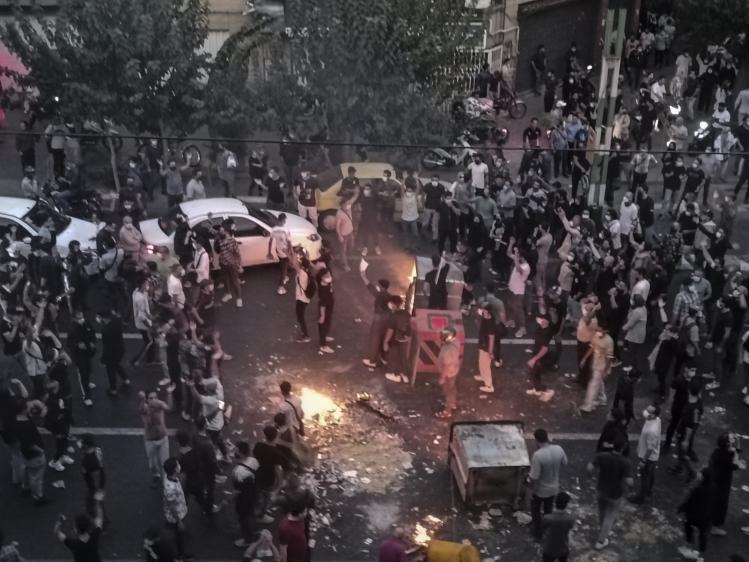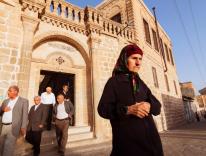
“Woman, life, freedom!” On the streets of Iran, more than a month after the death of twenty-two-year-old Mahsa Amini, protesters in eighty-five cities chant their frustration with the government. Amini, a Kurdish woman who was on vacation in Tehran, was taken into custody by the Iranian “morality police” on September 13. Her hair was allegedly peeking out from behind her hijab, violating the mandatory dress code that requires women to completely cover their hair and the curves of their bodies. Some victims of the morality police get off with a verbal warning, while others are fined or beaten. Fellow detainees in the van with Amini claimed that security forces hit her head, likely causing the injuries that lead to her death. Later that day, she was rushed from the detention center to the hospital, where she lay in a coma. She died on September 16. Government officials claim, unconvincingly, that she suffered a heart attack from a preexisting condition.
Iran’s morality police pose a constant threat—primarily, though not exclusively, to women. Iranian women have to worry about being arrested for the length of their robes, the style of their hair, or public displays of affection, but many also seek to fight the regime, inch by inch, by testing the limits of what they are allowed to do and wear. Following the 2021 election of conservative President Ebrahim Raisi, though, the hijab law has been enforced more harshly than ever. This only compounds the frustrations of daily life in a country where sanctions have devastated the economy, unemployment for young people is almost 25 percent, corruption runs rampant, and political opposition is met with censorship, arrest, or exile. While women and high-school-aged girls are at the forefront of the continuing protests—tearing off headscarves, chanting and singing, and facing down riot police with incredible courage—women’s rights are not their only concern. Protesters, including striking oil workers, also call for “death to the dictator,” Supreme Leader Ayatollah Ali Khamenei.
Khamenei and Raisi have responded with violent crackdowns, and protesters have sometimes fought back. Human-rights groups estimate that more than a hundred people around the country have died in the Amini protests, including at least twenty-three minors. The Iranian government blames the United States and Israel for inciting “chaos and terror.” The heightened tensions between the West and Iran are undermining negotiations over Iran’s nuclear program. Meanwhile, the Biden administration has reiterated its support for women in Iran and added new exceptions to sanctions, allowing licenses for software that helps Iranians on the internet communicate and maintain privacy. But this is only a partial solution, as the government has harshly curtailed internet access, forcing Iranians onto highly surveilled government-run platforms. This makes it difficult for protest organizers to coordinate, and for people inside the country to share their struggle with the outside world. It also accelerates the government’s move toward replacing the global internet in Iran with a tightly controlled national intranet.
Because they lack a clear leader and are not associated with any particular party, the protests are hard to suppress, but also hard to translate into an effective political movement. For now, though, the protesters still have plenty of reasons to keep taking to the streets, reasons catalogued in their unofficial anthem, “Baraye.” Drawing his lyrics from tweets from young Iranian protesters, songwriter Shervin Hajipour sings, “For my sister, your sister, our sisters…for the sunrise after long, dark nights.” Iran’s long dark night has lasted for over forty years now, despite many false dawns, but the country’s women and young girls are still bravely marching forward, come what may.
Please email comments to [email protected] and join the conversation on our Facebook page.
Previous Story
That ‘70s Church
Next Story
Musk Amok

